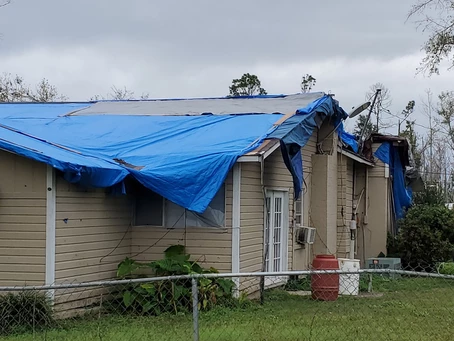Note: There has been an update to this post since it was originally posted. New information is in red below.
Great news from Tallahassee for communities that continue to struggle with housing recovery following Hurricane Michael. The State will appropriate an additional $20 million in Hurricane Housing Recovery Program (HHRP) dollars in the upcoming budget. An another $10 million will go to the Florida Housing Finance Corporation to manage a program to help provide down payment and closing cost assistance directly to home buyers. This $30 million allocation is a portion of the total $370 million included to address affordable housing needs more broadly – what a big day for the entire State of Florida!
WHAT DOES THIS MEAN?
County and city local governments affected by Hurricane Michael will get more money to address local housing challenges as they see fit. This can include repairing homes or helping families buy new homes in a post-Hurricane Michael housing market where prices are much higher. HHRP is a lot like the well-known State Housing Initiatives Partnership (SHIP) program that has been around for decades but it’s a specific appropriation for communities impacted by disasters. Last year, the State appropriated $65 million through this same program for Michael-impacted areas. To get an idea of how much of the $20 million your community may receive, you can view last year’s breakdown here and apply the formula to this year’s allocation.
WHAT SHOULD WE DO?
- Pay attention to the State’s plan for CDBG-DR dollars.
In the coming weeks, the State of Florida’s Department of Economic Opportunity will release it’s draft plan for Community Development Block Grant – Disaster Recovery that will guide the spending of $735 million in Hurricane Michael-impacted areas. This plan will no doubt include funding for housing repair and other housing needs. Cities and counties should read this plan and consider housing strategies that WON’T be covered by CDBG-DR funding. For example, if DEO releases a program to help repair/rebuild homes for households that make less than 80 percent of the Area Median Income, your HHRP funding can fill the gaps for those who bring in more income but still need assistance. Of course, while keeping in mind that there are program requirements for how much money must be spent on different income brackets. To get a heads up when this plan is released, sign-up for updates here.
- Partner with local code enforcement.
Nearly 18 months after Hurricane Michael, code enforcement is in full swing requiring homeowners to fix their houses when they do not meet local code. When a local government understands “why” people aren’t repairing their homes they can use funding such as HHRP to try to offer a path forward, where possible. Talk to code enforcement officials to find out where there is a gap that other housing programs aren’t meeting. Remember that homes remaining in disrepair can bring down property values and have a negative affect on the entire community.
- Think outside the box.
With additional funding comes opportunities to try new strategies to create affordable housing, specific to your community needs. This can get tricky because you’ll need to understand local development, lending, real estate and demographic needs. But there are folks (including the OVID team) who can help. The Florida Housing Coalition is a great resource and has a treasure trove of training videos that can give an idea of what other communities are doing to address their unique needs.
Understanding the details of affordable housing programs and how to use them to address your disaster recovery needs can get complicated. We totally understand! Fortunately, we’re here to help. Contact us if you’d like to set up a housing strategy brainstorming session at no cost to your local government.

